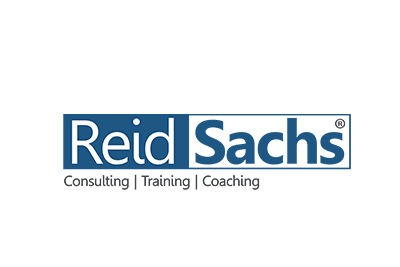
Writing Winning Grant Proposals and Concept Notes for Non-profits and NGOs
ReidSachs LLC hosted a training on Writing Winning Grant Proposals and Concept Notes for NGOs and Non-profit organizations on March 1, 2023. Over 60 participants from 18 countries learned the key elements of grant proposals and concept notes. Here is a short summary of the presentation:
Every organization needs money to operate. For a new organization, however, revenue streams are small and getting credit to support operating funds is difficult. Grants of various kinds can allow a new organization to establish its activities and build expertise. They also allow established organizations to start new services or expand services to new populations or in new locations.
Writing proposals in response to grants is an important skill to have in leading an organization or establishing a new organization. Some organizations have a team member or a board member with this skill though also organizations hire outside contractors to do the work.
Here are several key elements for writing a successful grant proposal.
Know your organization:
There are many grants and funding opportunities. Usually the funder will specify who is entitled to apply for the grant, be it an individual or organization of a particular type or location or size. Always check on the criteria for applicants before going to the task of writing a proposal submission.
Beyond these concrete criteria, one must also look at whether the grant supports activities that are relevant to your organization. Does your organization have past experience in providing these services? If not, how will you make the case that your organization can provide these services? Maybe you have provided these services and would like to expand your services to a new location or with a new population. Is doing so the right strategic move for your organization?
These comments highlight the importance of knowing your organization. Conducting a SWOT analysis of your organization is a useful exercise in general. It is particularly useful to guide decisions about program development and which grant applications to consider.
Problem statement:
A speaker doing a presentation about proposal writing once asked the audience: If you want to hang a picture on the wall what do you need? People responded with answers such as a hammer, a nail, a hook, a wire. The speaker replied to the group: What you really need is a hole.
Now there are many different ways to hang a picture, but the speaker’s point was that people mix the means of solving the problem with the problem itself. Most grant proposals ask that the proposal begin with a problem statement. The story about the picture hanging speaks to the importance of looking hard at the core problem.
For example, children need education. But why? It may seem obvious, but it is important to be able to express why education is important rather than just presume it is, and to explain how your proposed project will address this need. Thinking this way will make your proposal and presentation more focused and therefore more persuasive.
A problem statement should also be specific and factual. There will be limited space for you to explain a problem in detail, but including data and specific examples will make the problem statement clearer. Keep in mind that the person who reads your proposal may not know the field the way you, the writer of the proposal, does. So, explain any industry specific jargon or abbreviations in your writing.
Objectives:
Having identified and defined the problem one must explain the objectives of the proposed project. A helpful guide to writing objectives is the SMART model.
- Specific: as with the problem statement, use data or other details.
- Measurable: objectives must be measurable in order to determine if an objective has been met
- Achievable: objectives must be able to be achieved within the scope of the project
- Relevant, realistic: objectives must be relevant to the subject or scope of the proposal
- Time-bound: time frames are important for measuring progress and for demonstrating to the funder that the project is organized and monitored.
Criteria:
Many grant applications will specify the format for submission. These may be very specific in terms of sections the proposal must have, page limit, word count, font. Follow them carefully. There is keen competition for grants. No matter how good your proposal is, if you do not follow the criteria your submission will be disqualified before it is even read.
Other factors:
There are many other factors included in successful proposal writing that were reviewed in the presentation. These include but are not limited to:
- Describing the qualifications of the project leader and team
- Describing the organizational capacity
- Monitoring and evaluation process
- Potential for further support
- Diversity, equity and inclusion elements of the project
- Budgets
Concept notes:
Many of the elements that are part of a grant proposal are also relevant to concept notes. The concept note is less structured than a grant proposal because, most often, one is making a suggestion to the funder about a project rather than responding to a specific request.
Concept notes usually are shorter than grant proposals and therefore one must be clear and terse. Nonetheless, one must describe the problem, the proposed solution to the problem with objectives, the organizational capacity to complete the project and an overall budget.
Some organizations have specific criteria for concept notes or will only accept them within certain subject areas. As with grant proposals, knowing what the funder’s criteria are and whether the proposal fits with your organization’s core competencies will help determine where to submit a concept note.
Do you need assistance responding to any grant requests? Please get in touch with us via info@reidsachs.com. We are ever ready to work with you to achieve the best results.
You may also follow us on social media channels and subscribe to our newsletter for updates on our upcoming presentations and events.

